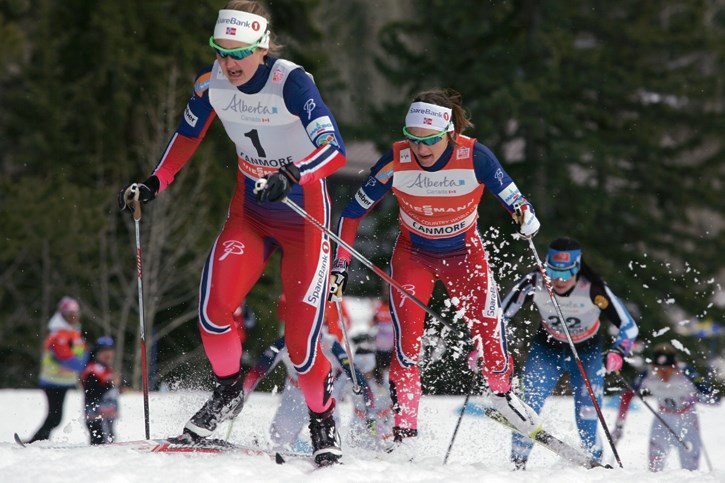The biggest cross-country race event to be held in Canmore since the Olympics in 1988, and a coordinated effort to hold a winter carnival at the same time, has resulted in a $6.8 million economic impact for the community.
Ski Tour Canada finished up the 2015-16 FIS World Cup cross-country yearly calendar of races in Canmore in March at the Nordic Centre – the first time FIS Crystal Globes have been presented in North America.
Organizers with the Alberta World Cup Society hired Canadian Sport Tourism Alliance to perform an economic impact analysis for the event, which combined efforts with the municipality to host a winter carnival at the same time.
Norbert Meier, event chair for the local Ski Tour Canada event, said the overall impact for Alberta of $8.8 million and locally of $6.8 million was above what organizers expected.
“We knew our community and our volunteers had put on a great event, but when you see the numbers – it simply makes that point more emphatically,” Meier said. “All of our event partners and funders invested in the Alberta World Cup Society’s ability to put on an international calibre event at the Canmore Nordic Centre. Today, we’re happy to announce the return on that investment.”
The economic impact estimated total economic activity based on combined estimated spending of out-of-town spectators and participants, in combination with the organizing committee’s hosting expenditures.
The analysis also looked at athletes’ and teams’ response to the courses and conditions. Canmore received a score of 8.67 out of 10 from participating national teams and ski racing supplier industry reports. The average score for all world cup events for the FIS 2015-16 season was 8.06.
Meier said economic impact reports on events like the recent world cup help organizers of future races demonstrate there is a return on investment when they sponsor organizing committee efforts to host international calibre events.
“We want to be able to show what an investment delivers in economic impact,” he said. “It is such an important part of discussing investment and sponsorship with event partners.”
It also demonstrates, he said, that holding major Nordic events in Canmore has a broader economic impact in the community beyond hotel room bookings. When compared to world cups in the past, Meier pointed out that this year’s events were a significant increase in economic impact.
The December 2012 world cup races had an economic impact of $3.6 million locally, using the same model to assess its results.
“To us that is very significant,” Meier said. “For us, we look at that number and it is bigger than we hoped.”
This year’s cross-country world cup races in Canmore saw 16,000 spectators over the four races from March 7-12, with a quarter of those being locals. Of the 12,000 visitors that came to the valley for the events, 33 per cent were from overseas.
Meier said knowing where visitors came from to watch the race would also help future marketing strategies and promotional materials. There were also 36 million viewers who watched the event take place in Canmore.
Finally, Meier said, the analysis relates to how vital a facility like the Canmore Nordic Centre is to the community.
“It is a real economic driver,” he said. “It was not a surprise, but studies like this show how important economically a facility like the Canmore Nordic Centre is and I don’t know if we talk about that enough.”
The community efforts to host a winter carnival in conjunction with the cross-country world cup and biathlon world cup events in February were also a success for organizers, said Meier. That includes medal presentation ceremonies held in the downtown core at the Civic Centre Plaza.
“It gets visitors into the habit of going downtown to see what is happening,” he said. “We have always hoped the races would be more than just ski races … we need the winter carnival for animation and interest.”
There are future events already on the horizon, including a December 2017 Para-Nordic IPC World Cup planned for Canmore and, with the FIS World Cup 2019-20 season calendar being set in near future, the Bow Valley is a likely contender as a host venue.




